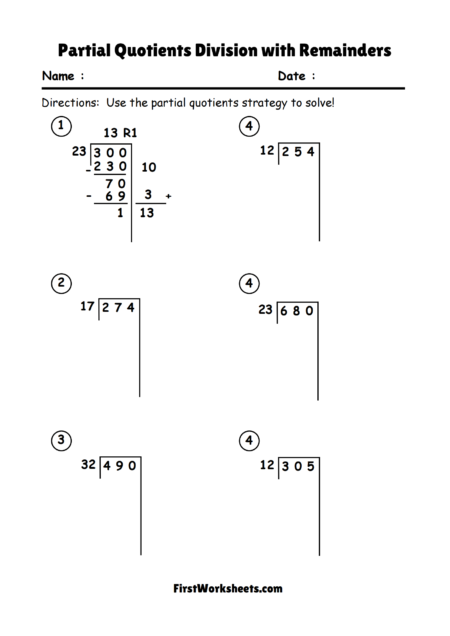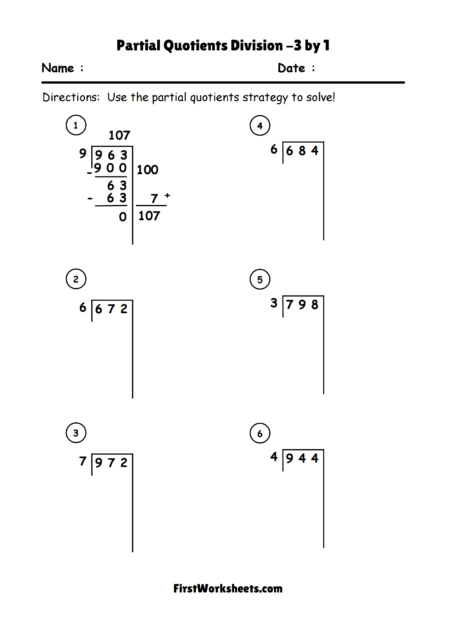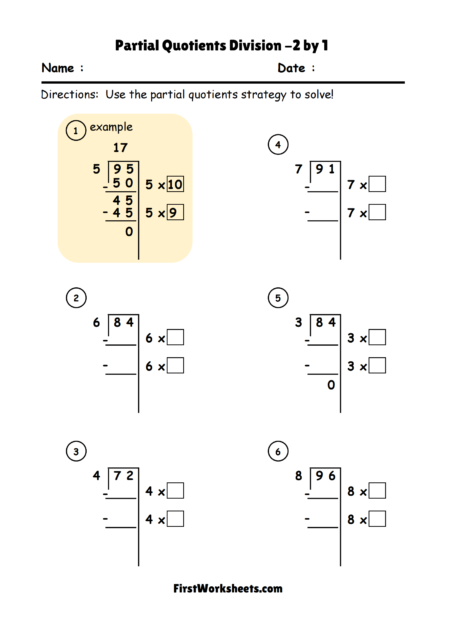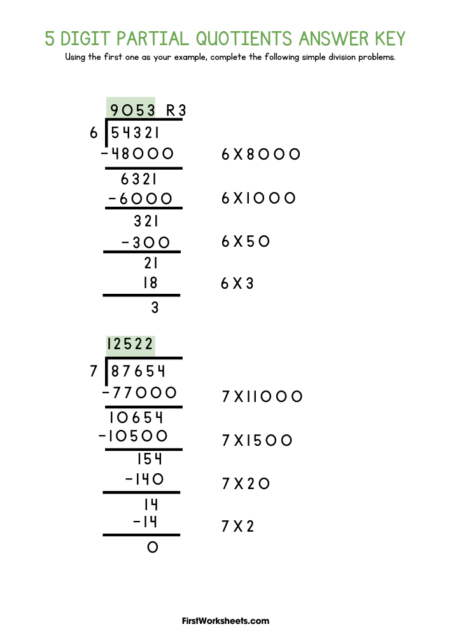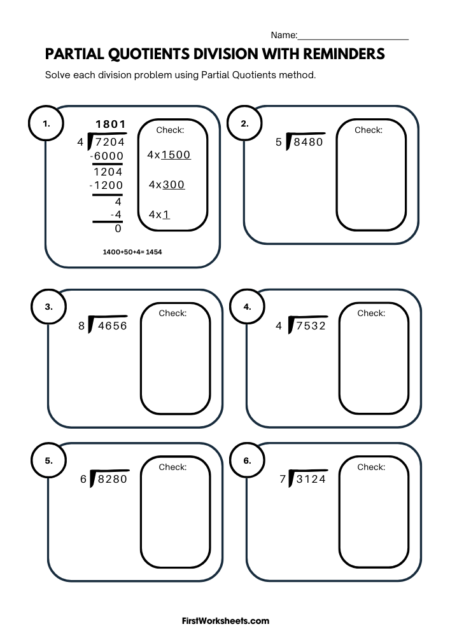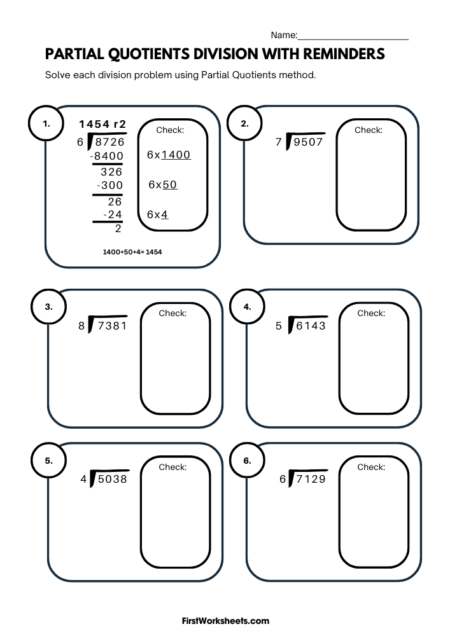This worksheet focuses on practicing the partial quotients division strategy. It’s designed to help students develop their division skills by breaking down larger division problems into smaller, more manageable steps. The purpose of using the partial quotients method is to make division easier, especially when dealing with larger numbers. Here’s how it works:
- Step 1: Set up the problem. The dividend (the number being divided) is placed inside the division bracket, and the divisor (the number dividing the dividend) is placed outside.
- Step 2: Choose a partial quotient. Students select a number that is easy to multiply by the divisor and that will “go into” a portion of the dividend. This is written above the division bracket.
- Step 3: Multiply and subtract. Multiply the chosen partial quotient by the divisor, and write the result below the portion of the dividend it corresponds to. Then, subtract to find the remainder.
- Step 4: Repeat. Continue choosing partial quotients, multiplying, and subtracting until the remainder is smaller than the divisor.
- Step 5: Add the partial quotients. The final answer is the sum of all the partial quotients chosen during the process.
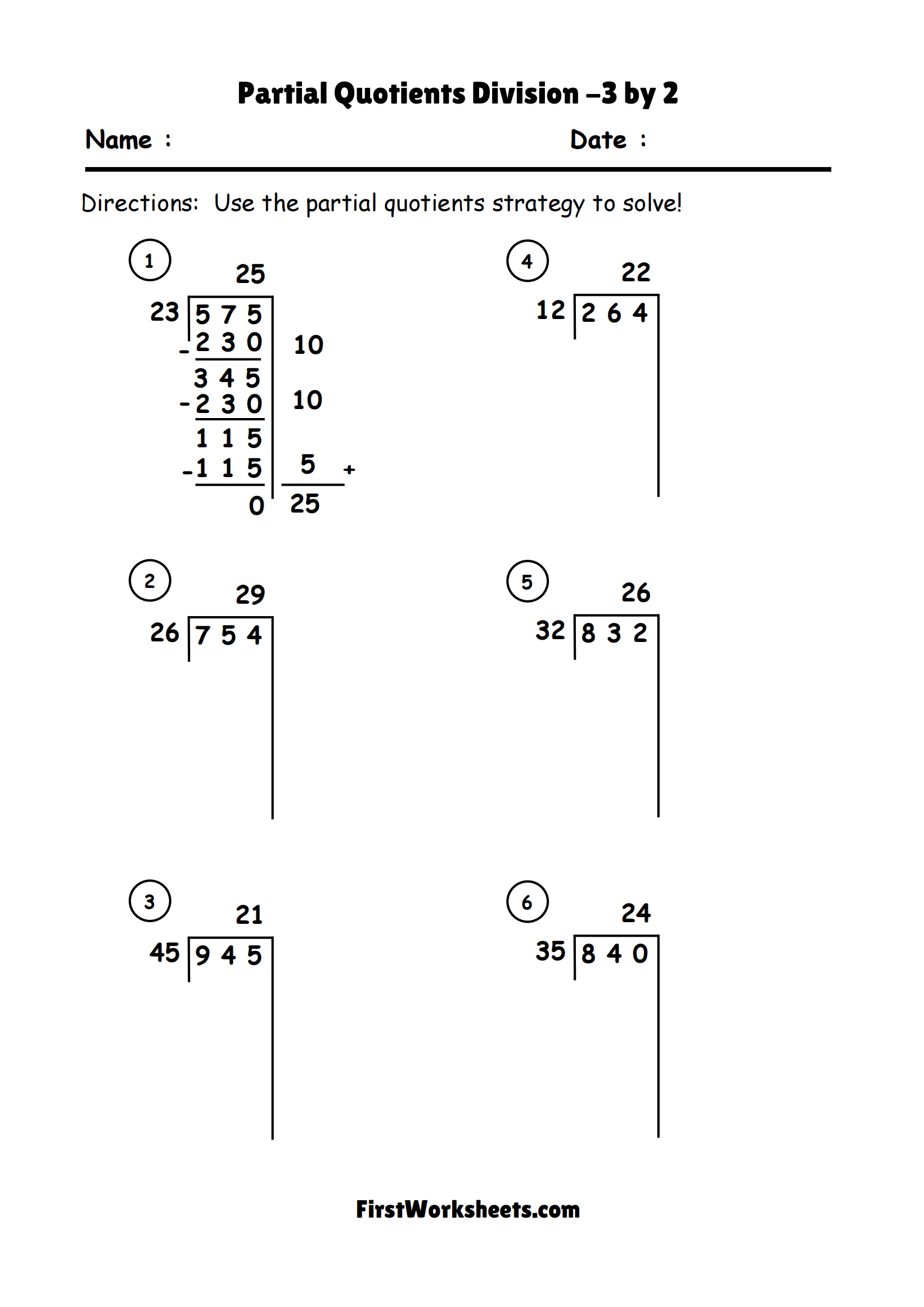
Answer Key

